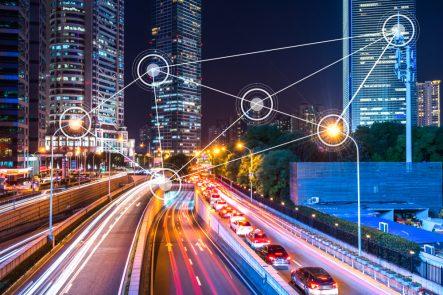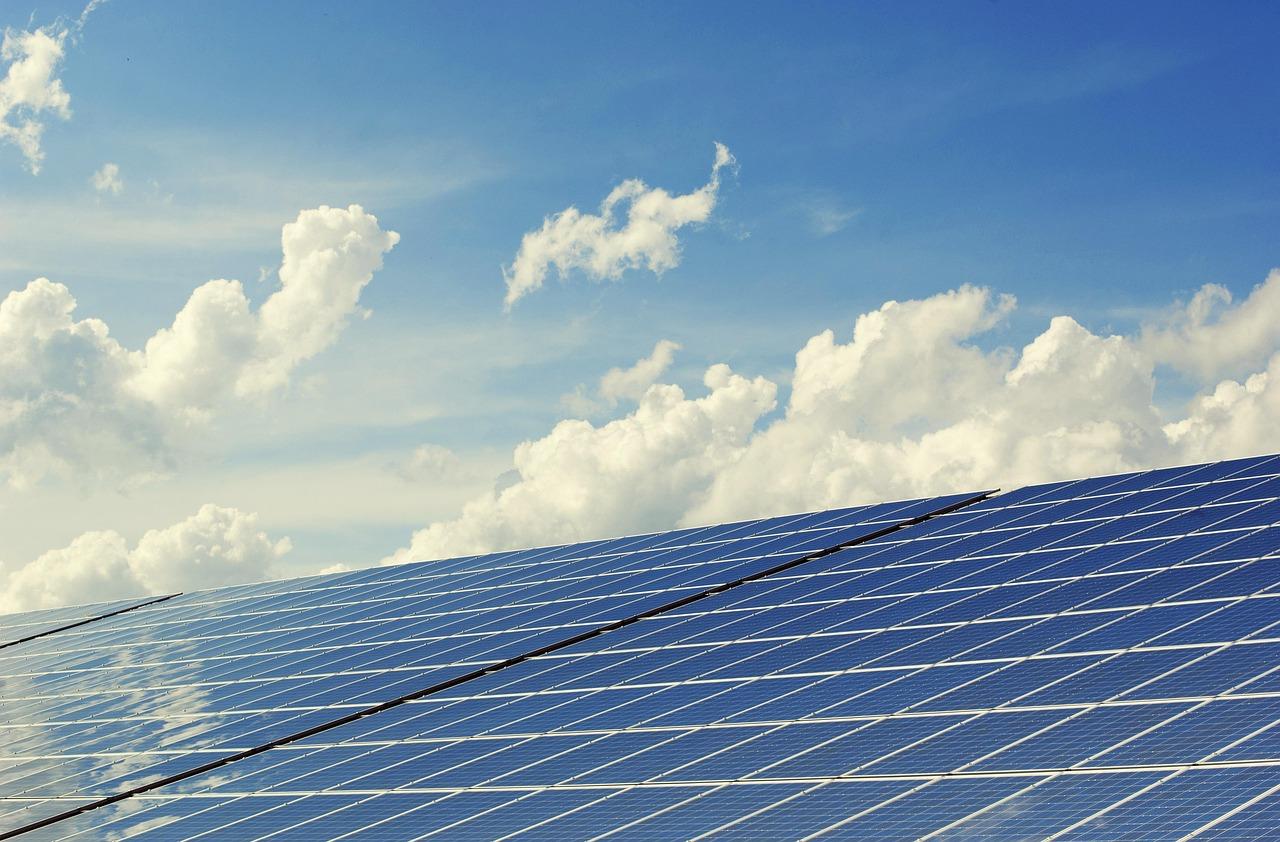In an era where sustainability and innovation intertwine,the concept of a green home is evolving beyond mere energy efficiency to embrace a smarter,more integrated lifestyle. As technology increasingly empowers homeowners, the notion of automating our abodes has become not just a trend, but a necessity in the quest for eco-conscious living. “Green & Smart: Energy-Saving Home Automation Tips” delves into the intersection of technology and environmental mindfulness, offering a wealth of strategies to transform your living space into a haven of efficiency.From intelligent lighting systems that adjust to your schedule, to smart thermostats that learn your habits, these tips will guide you in creating a home that not only saves energy but also enhances your everyday life.Join us as we explore how simple automation can lead to meaningful savings—both for your wallet and for the planet.
Harnessing Technology for Energy Efficiency in Your Home
Embracing modern technology can significantly enhance energy efficiency in your home. One of the simplest and most effective strategies is to invest in smart thermostats. These devices learn your family’s routines and adjust heating and cooling accordingly. As an example, if everyone leaves for work around the same time, a smart thermostat will lower the temperature, reducing energy consumption without sacrificing comfort.
Another vital component of energy-efficient home automation is smart lighting systems. These systems allow you to control your lights remotely or set them to operate on a schedule. Consider using LED smart bulbs that can adjust their brightness and even change colors based on your mood or the time of day. The combination of automation and efficiency means you can save both energy and money while creating the perfect ambiance in your living spaces. Here are a few key features to look for:
- Remote Access: Control lights from your smartphone.
- Motion Sensors: Automatically turn off lights when a room is unoccupied.
- Energy Tracking: Monitor your usage and save on costs.
to take your energy efficiency a step further, consider integrating smart home hubs that connect various devices, allowing for seamless automation across your ecosystem. For example, connecting your thermostat, lighting, and appliances can definitely help detect patterns and create routines that optimize energy use. Below is a simple comparison of the benefits of incorporating a smart home hub:
| Feature | Manual System | Smart Home Hub |
|---|---|---|
| Scheduling | Limited | Advanced |
| Remote Control | No | Yes |
| Integration with Other Devices | None | Multiple |

Effective Smart Lighting Solutions for Sustainable Living
Integrating smart lighting into your home not only enhances convenience but also plays a crucial role in energy conservation. By opting for LED lights, which use up to 80% less energy than conventional incandescent bulbs, you can dramatically reduce your electricity consumption. Additionally, installing smart light bulbs that can be controlled remotely through your smartphone or voice assistant allows for unparalleled versatility.These bulbs can be programmed to turn off when you leave the house or dim based on the time of day, minimizing wasted energy.
Another innovative approach involves the use of motion sensors. These sensors detect when someone enters a room and automatically turn on the lights, ensuring that energy is not wasted in unoccupied spaces. Furthermore, integrating smart lighting with daylight sensors ensures that indoor lights dim or turn off when there is sufficient natural light. This combination not only enhances energy efficiency but also creates a more cozy living environment, where lighting adapts to your needs.
To complement these technologies, consider implementing a smart lighting system that allows you to customize settings through a centralized hub. With this system,you can create different room lighting profiles for various activities—such as working,relaxing,or entertaining—thus optimizing energy use. Below is a simple table reflecting the energy savings associated with switching to various smart lighting options:
| Lighting Type | Energy Consumption (Watts) | Annual Cost Estimate ($) |
|---|---|---|
| Incandescent | 60 | $30 |
| CFL | 15 | $7.50 |
| LED | 10 | $5 |
| Smart LED | 10 (plus smart control) | $5 |

Optimizing Climate Control with Smart Thermostats
Smart thermostats revolutionize the way we manage our home’s climate by allowing for precise programming and remote access. Whether you’re away for the day or snuggled up on the couch, these devices ensure that your home remains comfortable while minimizing energy waste. Key features to look for include:
- Adaptive Learning: Many smart thermostats learn your schedule and preferences, adjusting the temperature to suit your lifestyle.
- Remote Control: With mobile app connectivity, you can manage your home’s climate from anywhere, reducing unneeded heating or cooling when away.
- Energy Reports: These devices typically provide insights into energy consumption, helping you identify patterns and potential savings.
Another significant advantage is the ability to integrate smart thermostats with other home automation systems. This creates a cohesive ecosystem that enhances energy efficiency. synchronization can include:
| Integration | Benefits |
|---|---|
| Smart Lighting | Adjust lighting based on occupancy, optimizing energy use. |
| Smart Blinds | Regulate solar heat gain, maintaining a consistent indoor temperature. |
| Weather sensors | Automatically adjust settings based on real-time weather conditions. |
Lastly, to maximize the potential of smart thermostats, maintain your system by regularly checking for software updates and ensuring that temperature sensors are correctly placed. A well-maintained thermostat not only boosts efficiency but also extends the lifespan of your heating and cooling systems. By leveraging the full capabilities of smart technology,you can significantly lower your carbon footprint while enjoying a comfortable living environment.

Integrating Renewable Energy Sources into Automated Systems
As the world embraces innovative technologies, not only promotes sustainability but also significantly reduces energy expenses. Home automation can leverage solar panels, wind turbines, and other renewable energies seamlessly. By utilizing smart meters and energy management systems, homeowners can optimize their energy consumption, ensuring that they use power generated from renewable sources when available.
Consider setting up your automated systems to prioritize energy sourced from renewables through smart configuration. As a notable example,devices such as smart thermostats can be programmed to draw power from solar energy during peak sunlight hours,ensuring that the grid is used only when necessary.To enhance this integration, here are some key elements to include in your automated setup:
- Smart Energy Monitors: track usage patterns of renewable energy.
- Automated Load Shedding: Manage device usage based on energy availability.
- Energy Storage Systems: Store excess energy for use during lower production periods.
Additionally, pairing renewable energy systems with battery storage can enhance resilience and efficiency. By creating a table to visualize potential cost savings and energy output from renewables, homeowners can better understand the benefits:
| Energy Source | Average Output (kWh) | Estimated Monthly Savings ($) |
|---|---|---|
| Solar Panels | 300 | $50 |
| Wind Turbine | 250 | $40 |
| Geothermal System | 200 | $35 |
Ultimately, ensuring these systems can communicate efficiently is essential. implementing IoT (Internet of Things) devices can further streamline the process, allowing for real-time adjustments to maximize the use of renewable energy. By creating a harmonious eco-pleasant environment through home automation, homeowners can contribute positively to the planet while enjoying enhanced energy efficiency.
Q&A
Q&A: Green & Smart – Energy-Saving Home Automation Tips
Q: What is home automation, and how does it contribute to energy savings?
A: Home automation refers to the use of technology to control various aspects of a home, including lighting, heating, cooling, and security systems, all remotely or through programmable schedules. By automating these systems, homes can reduce energy consumption by optimizing when and how energy is used.For instance, smart thermostats can learn your preferences and adjust temperatures accordingly, ensuring you’re not heating or cooling an empty house.Q: What are some essential devices for creating an energy-efficient automated home?
A: To start on your energy-saving journey, consider investing in smart thermostats, energy-efficient smart bulbs, smart plugs, and home energy management systems. Smart thermostats, like the Nest or Ecobee, can significantly reduce heating and cooling costs. Energy-efficient smart bulbs, such as those from Philips Hue, consume less power than regular bulbs and can be programmed to dim or turn off when not needed.
Q: How can I optimize my lighting through home automation?
A: You can optimize your lighting by incorporating smart lighting solutions that adjust based on occupancy or time of day.For example, smart sensors can turn lights on when someone enters a room and turn them off when they leave. You can also set schedules to have lights dim during the night or turn off automatically during the day when natural light is available, significantly cutting down on electricity usage.
Q: What role do smart plugs play in energy conservation?
A: Smart plugs are small devices that fit into standard outlets and allow you to control any appliance plugged into them remotely. By scheduling appliances to turn off when not in use or monitoring their energy consumption, you can easily identify which devices are energy hogs and reduce wasted energy. They’re notably handy for appliances that might otherwise be left on unintentionally.
Q: Are there any other tips to make my home more energy-efficient through automation?
A: Absolutely! Here are a few additional tips:
- Implement smart blinds: These can be programmed to open and close based on sunlight, reducing the need for heating and cooling.
- Use energy management systems: These provide insights into your home’s energy usage and help identify areas where you can save.
- Schedule regular maintenance: Automated reminders can help ensure your HVAC system runs efficiently, further conserving energy.
Q: How do I get started with home automation without feeling overwhelmed?
A: Begin with one or two devices that make the most sense for your lifestyle. As an example, if you regularly forget to turn off lights, start with smart bulbs. gradually expand your setup as you become more comfortable. Many devices integrate well with apps that provide user-friendly interfaces, making it easy to monitor and control your energy use.
Q: Is the investment in smart home devices worth it in the long run?
A: While the initial investment in smart technology can seem high, the potential savings on energy bills often outweigh these costs over time. Additionally,smarter homes can increase property value and contribute to a more sustainable lifestyle.With integrated systems that promote energy efficiency, you’re not just saving money; you’re also helping the environment.
Q: Where can I find more data on energy-saving home automation?
A: Numerous online resources, blogs, and forums focus on home automation and energy efficiency. Websites like Energy Star and the U.S. Department of energy offer valuable insights and tips. Local home improvement stores also frequently enough have knowledgeable staff who can definitely help guide you in the right direction. Online community groups can share their experiences and recommendations on specific devices and setups.
By embracing these energy-saving home automation tips, you can create a greener, smarter home that benefits both your wallet and the planet.
In Retrospect
As we draw the curtain on our exploration of energy-saving home automation, its clear that embracing these innovative technologies is not just a smart choice—it’s a responsible one. From the seamless integration of smart thermostats to the convenience of automated lighting systems, each tip shared in this article brings us one step closer to a more sustainable future. The journey towards an eco-friendly home begins with small, intentional changes that can lead to significant impacts on both our environment and our wallets.
As you embark on your own energy-saving adventure, remember that the heart of home automation lies in enhancing your lifestyle while nurturing the planet. It’s about finding that perfect balance between comfort and conservation, all while being empowered by technology. So, take these insights to heart, experiment with different solutions, and watch your home transform into a greener, smarter haven. Together, we can pave the way for a more sustainable tomorrow, one automated step at a time.Thank you for joining us on this journey towards a brighter, more energy-efficient future!